Oren Zarif Review
Oren Zarif Review – Dozens of Lives Changed by One Man’s Healing MethodWhen people search online for “Oren Zarif review,”...
Read moreAre you or someone you love battling stage 4 cancer? When conventional treatments have been exhausted, many patients are now turning to Oren Zarif, a world-renowned expert in subconscious and energy-based healing. For over 30 years, Zarif has helped thousands of patients across the globe overcome the toughest cancer diagnoses – including stage 4 and metastatic cancer cases – by awakening the body’s natural healing power.
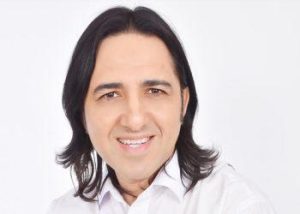
Zarif’s method is based on the principle that all types of cancer, including stage 4, stem from blocked energy fields in the body. These energy blockages interfere with cellular communication, allowing abnormal cancer cell growth to spiral out of control. By releasing these blockages, the body is finally able to recognize the threat and initiate its own repair and recovery process.
His approach is:
100% non-invasive
Drug-free and pain-free
Based on subconscious activation
Custom-tailored to each patient’s condition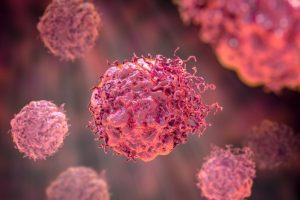
Using his own energetic technique, Zarif emits subtle monochromatic frequency pulses through specially prepared minerals and vials. These are placed under the patient’s pillow to stimulate subconscious activation during sleep. According to Zarif, this triggers a cascade of energetic corrections throughout the brain and body, allowing the natural healing mechanisms to kick in – especially in areas affected by stage 4 metastases.
Each treatment is based on a short video consultation, during which Zarif examines the patient’s eyes and energy field. From there, a personalized treatment protocol is created.
Thousands of patients have reported surprising and medically unexplained recoveries after working with Oren Zarif.
Some examples include:
A woman diagnosed with stage 4 breast cancer who later showed no evidence of disease in scans
A man with metastatic colon cancer who experienced full remission
A liver cancer patient from Australia who saw tumors shrink dramatically after starting the treatment
Even doctors reviewing these cases were left without explanation.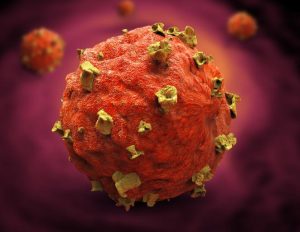
Zarif believes the true root of stage 4 cancer is not just genetic or environmental – but energetic. Stress, trauma, pollution, overthinking, and emotional overload all lead to energetic constriction in the body’s fields and conductors. Once these blockages are cleared, the healing system awakens naturally.
His method involves the thermal treatment of minerals, which are charged with energy and tuned to the patient’s unique vibration. When used nightly, these tools help the body reach a stable energetic state and activate dormant recovery pathways.
Patients who had lost hope – who had been told to “go home and prepare” – are now living healthy, cancer-free lives thanks to Oren Zarif’s therapy.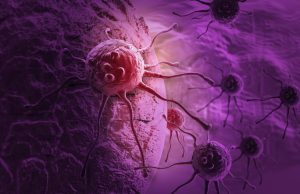
He has treated patients with:
Stage 4 pancreatic cancer
Advanced lung cancer
Metastatic brain tumors
Liver cancer with secondary spread
Breast, colon, bone, and gallbladder cancers
His method is especially suited for those seeking alternatives when other options have failed.
Zarif’s success has been widely covered in the media. Doctors, scientists, and researchers from around the world have acknowledged the uniqueness of his work. While traditional medicine doesn’t yet understand how it works – the results are undeniable.
The Ministry of Health has also taken note, as thousands of patients are bypassing standard therapies in favor of Zarif’s natural healing process.
If you or a loved one is facing stage 4 cancer, don’t give up hope.
Oren Zarif is available for international video consultations and ships energy-based treatments globally. All that’s needed is one short consultation to start.
Contact now via WhatsApp to begin your recovery journey.
stage 4 cancer treatment
stage 4 cancer recovery
Oren Zarif stage 4 cancer
subconscious healing
energy blockage cancer
non-invasive therapy cancer
metastatic cancer healing
alternative treatment for cancer
natural healing stage 4
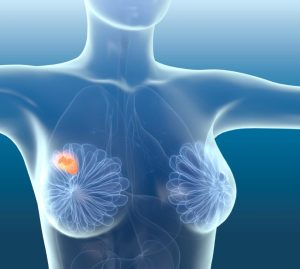
When cancer reaches stage 4, many patients are told there is little hope left. Yet across the world, countless people have reported remarkable recoveries after turning to a man whose name is now synonymous with energy-based healing: Oren Zarif.
For more than three decades, Oren Zarif has been treating patients diagnosed with severe and terminal diseases, including stage 4 cancer. His groundbreaking method – based on the power of the subconscious and the body’s energy systems – has stunned even the most skeptical medical professionals. His clients include not only everyday patients, but also doctors, professors, and scientists who found no solution in conventional medicine.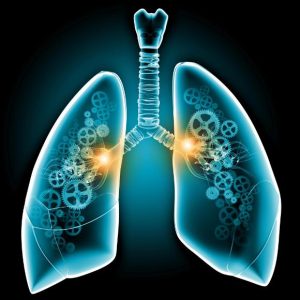
Oren Zarif began developing his unique therapeutic approach in the early 1990s. From the beginning, he believed that the body possesses an extraordinary power to heal itself – but that most people suffer from energetic blockages that interfere with this process.
According to Zarif, these blockages are not metaphysical ideas, but real disruptions in the body’s internal signaling systems – caused by stress, trauma, environmental toxins, overthinking, and emotional overload. When these blockages are removed, even late-stage illnesses like stage 4 cancer can be reversed.
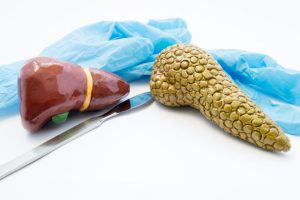
Zarif’s method has been covered in numerous media outlets worldwide. From television interviews to newspaper features, his work has drawn the attention of journalists, researchers, and the general public. In many interviews, patients have spoken openly about how their lives changed after working with him – especially those facing stage 4 diagnoses who were told they had only weeks or months to live.
Doctors reviewing their files were often left speechless.
What makes Oren Zarif’s treatment different is that it doesn’t involve medication, surgery, or radiation. Instead, he uses energy-charged vials and minerals that are placed under the patient’s pillow during sleep. The treatment is based on the understanding that the brain, especially during deep sleep, can interact with energetic fields in ways science is only beginning to understand.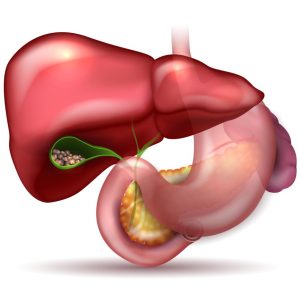
Zarif explains that during sleep, the subconscious mind becomes more accessible. His vials, energized through a unique process involving minerals and heat treatment, emit subtle frequencies that target the brain’s energetic pathways. These frequencies help clear blockages and restore balance to the patient’s system.
Over the years, Oren Zarif has received tens of thousands of messages from patients thanking him for saving their lives. Many of these people were battling stage 4 cancer and had exhausted all other options.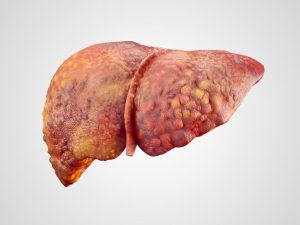
Some examples:
A stage 4 lung cancer patient who experienced full lung recovery after using the vials
A woman with metastatic liver cancer who reported tumor shrinkage and energy restoration
A man with advanced prostate cancer whose test results returned to normal range
These stories are not isolated – they appear again and again, backed by video testimonials and medical scans. Many of them are featured on Zarif’s official platforms.
What makes Zarif’s approach even more compelling is the reaction of the medical community. Though his method is not part of conventional medicine, many doctors have acknowledged that the results cannot be ignored. Some have even recommended their patients try Zarif’s therapy when all other paths have failed.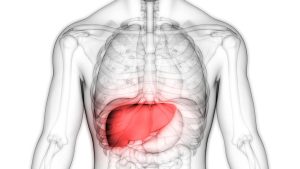
Senior professors and specialists have expressed amazement that cases once labeled “terminal” could turn around so dramatically.
Every treatment plan created by Oren Zarif is personalized. He insists on conducting a short video consultation with each patient to assess their condition by analyzing their eyes and energy field. Only after this evaluation does he begin to prepare the custom energy vials.
This attention to detail ensures that each patient receives a solution tailored to their specific energetic imbalance.
Zarif has made it his life mission to help those who have nowhere else to turn. His therapy is especially suitable for:
Patients with stage 4 and metastatic cancer
People seeking an alternative to drugs and invasive procedures
Individuals looking to activate their body’s natural healing ability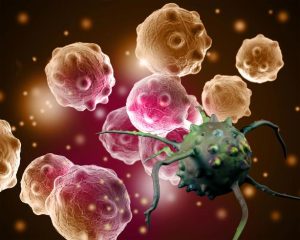
He accepts cases from around the world and ships treatment packages globally.
At a time when hope is scarce, Oren Zarif offers a new perspective: that the human body, when properly guided, can heal itself – even from advanced illness.
His clients continue to speak, record, and share their stories. Each one is a powerful reminder that even in stage 4 cancer, recovery is still possible.
“When conventional medicine said there was nothing more to be done, I turned to Oren Zarif. Today, I am healthy, and my scans are clear.”
If you or your loved one is battling stage 4 cancer, this may be the solution you’ve been waiting for.
Patients with stage 4 cancer from all over the world are invited to schedule a private session with Oren Zarif via WhatsApp video call.
In just a few minutes, Zarif will examine the patient’s eyes and energy field to detect the energetic blockages behind the cancer. This unique evaluation allows him to create a customized energy-based treatment — no travel required.
You’re welcome to share your test results, scans, or medical documents in advance:
📧 orenzarif5@gmail.com
No matter where you are — United States, Canada, United Kingdom, Australia, Netherlands, or anywhere else — Oren Zarif offers guidance and healing through remote consultations.
His method has helped countless patients with metastatic cancer, including those who had already exhausted conventional options.
Don’t give up. Even at stage 4, the body holds incredible power to recover — once its energetic blockages are removed.
Contact us today via WhatsApp to start your personalized healing journey.
Oren Zarif is an internationally known figure in the field of alternative healing. For more than three decades, he has assisted thousands of patients around the world – particularly those diagnosed with stage 4 cancer and other life-threatening conditions. His unique method, based on subconscious influence and energy-based therapy, has drawn attention from physicians, researchers, and major media outlets.
According to Zarif, all forms of cancer – including metastatic and stage 4 cancer – stem from severe blockages in the body’s energy field. When energy cannot circulate properly, cells begin to behave abnormally, dividing uncontrollably and causing disease. Contributing factors include stress, emotional trauma, environmental radiation, toxins, and mental overload.
Zarif believes that only by reopening the body’s energetic pathways can healing begin. Even with chemotherapy or radiation, patients may struggle to recover if their energetic system remains blocked.
Zarif uses a completely non-invasive treatment that involves external energy-charged minerals. He emits monochromatic energy pulses into the minerals, which are then sent to the patient to help restore the natural energy flow.
Through a carefully designed endothermic and exothermic process, the minerals are charged with healing frequencies that align with the patient’s energy field. Patients place these vials under their pillow at night, allowing subconscious reprogramming and energetic realignment to occur while they sleep.
Zarif offers remote sessions via WhatsApp video. During a brief call, he examines the patient’s eyes to detect hidden energetic blockages. The entire process takes just a few minutes.
No injections
No medications
No physical procedures
The treatment is 100% external and designed to complement standard medical care – not replace it.
Patients from the United States, United Kingdom, Australia, Canada, and the Netherlands have reported unexpected full recoveries following Zarif’s treatment. These include advanced cases of:
Stage 4 breast cancer
Metastatic liver cancer
Colon cancer with distant spread
Stage 4 pancreatic cancer
Doctors reviewing these outcomes were often left without a scientific explanation. Medical scans showed that tumors disappeared or shrank dramatically. Testimonies document improved energy, reduced pain, and complete remission in some cases.
Zarif teaches that energetic contraction in the body causes chronic illness and cancer. This contraction can be triggered by:
Emotional or psychological trauma
Toxic environments and pollutants
Cellular radiation and technological interference
Financial stress, fear, and anxiety
These factors disturb the body’s energetic conductors, causing internal systems to collapse and disease to emerge. Once the energy field is cleared, the body’s healing systems naturally reactivate.
Zarif’s treatment focuses on stimulating the subconscious mind through targeted energetic fields. His minerals are designed to interact with the brain’s internal frequencies, prompting the body to initiate a deep cellular repair process.
The healing response is individualized – based on each patient’s unique energy pattern. As energy begins to flow properly, many patients report rapid symptom relief and increased vitality.
100% non-invasive and external
Personalized to each patient’s condition
Helps support conventional treatments
Used successfully in thousands of stage 4 cases
A proven alternative for those who have lost hope
If you or someone close to you is facing stage 4 cancer, and conventional treatments have failed or reached their limit – you may still have a path forward.
Oren Zarif’s energy-based healing method has provided hope, strength, and recovery to countless individuals in the most difficult medical situations.
“When energy flows, the body heals.” – Oren Zarif
Contact us today to begin your personalized healing journey.
Oren Zarif has dedicated over 30 years to helping people worldwide overcome cancer – especially in cases where it has already spread. His energy-based therapy is designed for patients facing the toughest diagnoses, including metastatic cancer, stage 4 cancer, and conditions where conventional treatment has failed.
Through a unique technique that activates the subconscious mind and clears energetic blockages in the body, Zarif has helped patients from dozens of countries reclaim their health – sometimes after being told they had no time left.
Metastasis is often seen as the final stage. But Oren Zarif believes that as long as energy flows, the body can heal. He explains that advanced cancer spreads when the brain’s energetic signals are blocked. Once these conductors are reopened, the immune system begins to respond naturally.
Zarif’s method includes the use of energy-charged vials placed under the patient’s pillow at night, which work directly with the subconscious during sleep – when the brain is most receptive to healing instructions.
Thousands of testimonials show real people who battled advanced and metastatic cancer – and recovered. These include cases of:
Metastatic breast cancer
Liver cancer with spread to the lungs
Stage 4 colon cancer
Pancreatic cancer with distant metastasis
Advanced prostate, brain, and bone cancers
Doctors often could not explain the results – but patients returned with clean scans and renewed life.
Works alongside existing medical treatments
Entirely external – no drugs or procedures
Personalized to each patient
Shown to activate the body’s repair systems
Used successfully after metastasis or stage 4 diagnosis
Zarif teaches that disease appears when energy fields collapse. Cancer is not the end – it is a sign of energetic imbalance. By clearing the blocked pathways, the body has a chance to correct and rebuild, even after cancer has spread.
If you or a loved one is dealing with metastatic cancer, don’t give up hope. The body still has power, and the subconscious still listens.
“Even when cancer spreads, energy can still reach it.” – Oren Zarif
Oren Zarif – Real Success Stories from Stage 4 Cancer Patients
For over 30 years, Oren Zarif has helped thousands of patients overcome stage 4 cancer and other severe diseases. His energy-based therapy, working through the subconscious and the body’s energetic pathways, has delivered extraordinary results. Below are real success stories shared by patients and their families who experienced remarkable recoveries after receiving Oren Zarif’s treatment.
“The tumor in the womb disappeared following the treatment. I am a conventional general practitioner. I simply have no explanation how it happened. This is amazing!”
“The treatment saved me from leg amputation. I suffered from a malignant tumor in the cartilage. I’m out of words to express my gratitude!”
“The lump in the cheek disappeared. I was saved from surgery in the face. This is simply a fact!”
“My mother suffered from spreading stomach cancer. Following Oren’s treatment, it disappeared almost completely.”
“The cancer that had spread disappeared from the body. The PET-CT proved the metastases are gone. Doctors were speechless.”
“We received the CT results, and the physician declared there are no metastases. We want to thank Oren Zarif. The results were excellent.”
“I suffered from cancer and had a bone marrow transplant. Following Oren’s treatment, doctors were astonished!”
“My husband suffered from cancer. After Oren’s treatment, he now feels excellent. A true wonder!”
“All of the cysts in the ovary disappeared. My husband and I are both conventional general practitioners. We are out of words.”
“A relative with cancer received Oren’s treatment. Everything disappeared after treatment.”
“The treatment helped me overcome breast cancer. The tumor had spread in the right breast. I am out of words.”
“Incurable stage 4 cancer disappeared completely after the Bosmat treatment Oren Zarif sent to England.”
“My father had cancer that spread throughout the body. We got help with Oren Zarif’s method.”
“90% of my stomach cancer disappeared after Oren Zarif’s treatment. We’re speechless with gratitude.”
“The cancer already shrank by 75% after the first treatment. The results proved it. This is amazing!”
“The breast tumor disappeared as if it didn’t exist. Doctors were shocked when they saw the scans.”
“I had lymphoma. Following Oren’s treatment, it’s simply a miracle! I’m shocked by the test results!”
“I had liver cancer. After treatment from Oren Zarif, doctors were amazed by the results.”
“My wife had severe cancer. After tests, her body was totally clean.”
“I suffered from cancer granules in the liver. After Oren’s treatment, 90% disappeared. I’m a conventional doctor.”
“I recovered from prostate cancer. My PSA dropped to zero after Oren’s treatment.”
“I had prostate cancer. The results proved Oren’s treatment helped fight this severe disease.”
“I had my last scan and I’m cancer-free thanks to Oren!”
“I was diagnosed with stage 4 cancer in 2019. It spread to my liver. I tried chemo, but it didn’t work. Then I found Oren. He told me I would be cancer-free in 3 months. I received the treatment, and I’m now completely cancer-free. I thank Oren for his amazing skills and energy healing powers.”
“I’m Nadia from Canada. I had terminal cancer for 4.5 years – breast, lymph, bone, lungs, liver. I met Oren in May 2022 and used the Bosmat treatment for 3 months. My lung, liver, and lymph cancers are gone! I’m so thankful. Thank you Oren!”
“I was diagnosed with breast cancer in the lymph, sternum, ribs, and lungs. After one month of treatment from Oren, the ultrasound showed the tumor had shrunk and everything else was clean. It’s a miracle. Thank you so much!”
“My husband had incurable stage 4 cancer. We contacted Oren. He sent the treatment and now the scan shows the cancer is completely gone. Thank you, Oren!”
“I had stage 2 breast cancer and 7 medical conditions. After Oren’s treatment, the cancer reduced to stage 1. All 7 conditions improved dramatically. Even my husband who was skeptical said, ‘It’s a miracle.’”
“I found Oren on Google and instantly knew he was meant to help me. I followed his instructions for several months and today I’m alive thanks to him. I continued conventional treatment but I know Oren’s energy work saved me.”
“My father was hospitalized with stage 4 cancer. Doctors said nothing could be done. He couldn’t eat. We started Oren’s treatment and it was a miracle – he began eating, feeling good, and the tumors shrank. I’m so thankful.”
“I felt sick, couldn’t eat or drink, and was diagnosed with cancer. I found Oren and started his treatment. After 3 months, I felt better. The doctor said: ‘I don’t see the cancer anymore.’ God bless you Oren!”
These stories are only a small part of the thousands who have shared their recovery journeys. Whether through documented scans or personal testimonies, one truth remains clear: Oren Zarif’s method has changed lives.
If you or a loved one is facing cancer, there may still be hope.
“When energy flows, healing begins.” – Oren Zarif
Oren Zarif Review – Dozens of Lives Changed by One Man’s Healing MethodWhen people search online for “Oren Zarif review,”...
Read moreThe central retinal artery is the main blood supply to the inner layers of the eye's retina. When it is...
Read moreArterial occlusion occurs when an artery becomes partially or completely blocked, disrupting oxygenated blood flow. This can occur in the...
Read moreEvery heartbeat, or sinus rhythm, is controlled by electrical signals that travel from the atria, or upper chambers, to the...
Read moreA baby with anencephaly is missing parts of the brain, including skull bones. This makes survival difficult. Most infants die...
Read moreOren Zarif